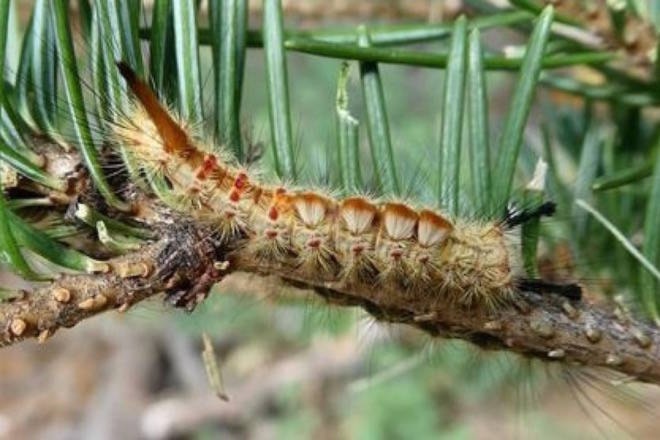An insect infestation that has the ability to quickly kill healthy Douglas fir trees is on the move in B.C., and the province says it’s been found farther north than ever before.
A statement from the Ministry of Forests says an infestation of tussock moth has been found in trees in the western Cariboo, just south of the community of Alkali Lake.
The pest, which during a severe infestation can kill a large Douglas fir in just one to two years, is usually found in more southern parts of the province, such as Kamloops and the Okanagan.
Tussock moth caterpillars feed on the needles of the Douglas fir, stripping limbs, which appear scorched as they die, and trees weakened by the moth are more susceptible to beetle attacks.
Hairs on the moth caterpillars can also pose a human health risk because the ministry says the hairs can cause allergic reactions in about 20 per cent of people, producing rashes, watery eyes and sneezing.
In an effort to slow the spread of the moth, the ministry says firewood should not be taken from the Wycotte Flat area south of Alkali Lake.
“Tree limbs are particularly infectious, as they may contain eggs,” the ministry statement says.
READ MORE: Cariboo lakes confirmed clear of invasive mussels after testing
Caterpillars, which can be recognized by two long, black tufts on each side of their head and another at the rear, hatch in late spring and develop into moths from late July to early September.
Female moths lay approximately 200 eggs each, which hatch the following spring and the ministry says outbreaks typically last two to four years.
Ministry officials are assessing the affected area and the statement says a treatment plan will begin when the caterpillars re-emerge next spring.
The Canadian Press
